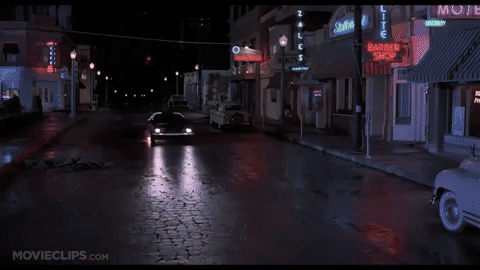To Be Truly Successful, the Cars of the Future Basically Need to Be Magic
The autonomous vehicles of tomorrow could be far more capable than any human driver. And we should accept nothing less.

Assuming all goes according to plan, the cars of the future will do many wonderful things. They’ll glide effortlessly through traffic while you doze. They’ll go park themselves and then come when summoned, like eager puppies. They’ll chat with each other to stay abreast of traffic conditions. They’ll also, of course, keep us—and those around us—out of harm’s way. They’ll be vigilant to threats such as swerving cars and kids chasing soccer balls, and be fully able to avoid them.
But in a recent conversation I had with an autonomy engineer at a big manufacturer—a casual, off-the-record chat—he noted that there will of course be certain accidents that are just unavoidable. I knew immediately what he meant: Incidents too fast or too weird for even a computer-based system to be expected to deal with them. Think freak accidents, like buses falling off overpasses onto your car, or rebar falling off a construction truck and blasting through your windshield. Rare as they are, those things happen. More to the point, endless variants of unpredictable mayhem happen all the time. There are a billion ways to die on the open road, and even having all the machines there be fully autonomous—presumably taking human fallibility out of the equation—won’t ensure absolute safety. To put it simply: Shit happens.
But guess what? Cars of tomorrow need to be able to handle that shit, too. To suggest even the most insanely unpredictable instances of roadway mayhem will remain beyond the capabilities of computer safety systems sets a standard that’s far too low. In fact, preventing those wildly unpredictable events from turning into accidents is precisely what the industry’s goal should be. The technology already exists for incomprehensibly fast detection, comprehension, and reaction times—and those factors that will only improve in years to come.
Take that truck falling off an overpass. At the moment, most semi-autonomous systems include hardware that only looks around them in a horizontal plane. Eventually, they’ll also need to look above them in all directions. If the sensor detects something coming from above—whether falling truck, dead-stick airplane landing on the highway, or boulder rolling down a hill—it can react, just as it would to a swerving car.
Likewise, that rebar coming toward the windshield? It may not be able to steer the whole car around it in time, but if the car knows where its occupants are seated—and even where their heads are, thanks to internal cameras—and it can plainly see the trajectory of the rebar rocket, it can shift the car enough in one direction or another in a millisecond to aim the flying debris straight past the human occupants.
Such borderline-clairvoyant capability will also be a necessary part of swaying the public in favor of self-driving cars, or even in favor of merely-augmented capabilities to save our bacon when we’re still at the controls. After all, setting the bar that high will likely also make all the other capabilities beneath it that much smoother and better, as well. Science fiction author Arthur C. Clarke hinted at this when he famously noted that "any sufficiently advanced technology is indistinguishable from magic." We haven’t truly crossed that line yet with any technology, but cars may be the first to achieve that standard.
But simply stopping itself when a soccer ball shows up isn’t good enough. That's not magic. The truth is, we’ll know it when we see it. But you can already start to sense the feeling of magic in the naturalistic way the earliest semi-autonomous cars tend to behave. In the systems I’ve experienced, you still maintain awareness of the environment, and find the car mirrors that awareness.
Infiniti design director Alfonso Albaiso makes a key additional point. “I drove our next-generation autonomous test car on a freeway in Yokohama,” he recalled in a recent interview. “There was a truck in front of me in the left lane and the autonomous car decided to pass it. It pulled into the right lane just as another slower car pulled into the same lane from the right. My car decided it was better to be where it was, so it tucked back in behind the truck. Even though it was simply recalculating and looking for the best path, I was surprised by how human the reaction felt. It acted just as I would, and it felt more organic than synthetic. It was a warm feeling, not a cold one.”
In short, it felt to him as though the car was a sentient being, and that sensation instantly rendered it more ally than adversary. All by virtue of the fact that the car seemed to be behaving in a way that was beyond the sum of its programming. Clarke would be impressed.
Looking forward in a more practical vein, the trust and faith such feelings will instill in "drivers" and occupants will be essential when it comes time for us to put our faith in the most advanced systems that will inevitably arrive. Build things smart enough, say, and when the vehicles expertly avoid a falling boulder or flying chunk of construction debris, it won’t just feel like a robot swerving to avoid something; it’ll be our wingman having our back on the freeway. Furthermore, if the car says “Whoah, close one,” after just such an encounter, it’ll be a friend for life. Pretty magical stuff, I’d say.
